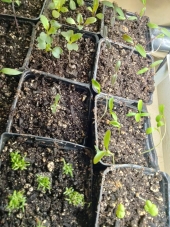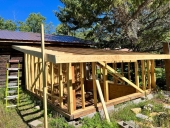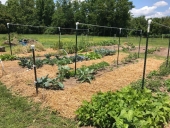


Roy Therrien wrote:First trees in! Three cherry trees (Bing, Ranier, Stella) arrived a bit earlier than we expected. That's probably a good thing, given the number of things we learned in the process.
Our major take-away from this first tree-planting experience was, wow, we gotta find an easier way. Three trees took 4 hard days of work, often with two people. That probably sounds funny to y'all, and frankly we enjoyed it, but it was wayyyy too inefficient.


Mike Haasl wrote:Thanks everyone! I really like how it's attached to the coop. Then it's a protected run in the summer if we're gone for a few days (just leave them locked in). I haven't figured out how to do a full Edible Acres system with feedstock going in and compost coming out. I'd also have to import a bunch of scraps to make that happen. I am getting two buckets of food scraps a week that I put in there for the birds to pick over and to turn into compost. But that's a far cry from what Sean is putting in.
Next year I may try to figure out how to store extra leaf bags. Then in late winter I can add 40 more bags to make even more compost.


Cy Cobb wrote:In your layered approach recommendation, is that for building a top soil where there isn't one currently?


Sandra Graham wrote:My tubers rarely seem to be near the plant, and this is true for all the varieties I grow. I think the tubers must be deep underground because I can dig a whole area over and find few or no tubers, even though it was teeming with medium to huge sun root plants. I know the tubers are there somewhere because the plants will spring up again thickly the next season. It’s incredibly frustrating and I haven’t heard anyone else mention this problem.

Cy Cobb wrote:I have really good soil now, & I want to keep it improving. My only complaint is, it develops a hard crust after heavy rain followed by really hot days. It actually hindered some of my seeds from sprouting through the crust.